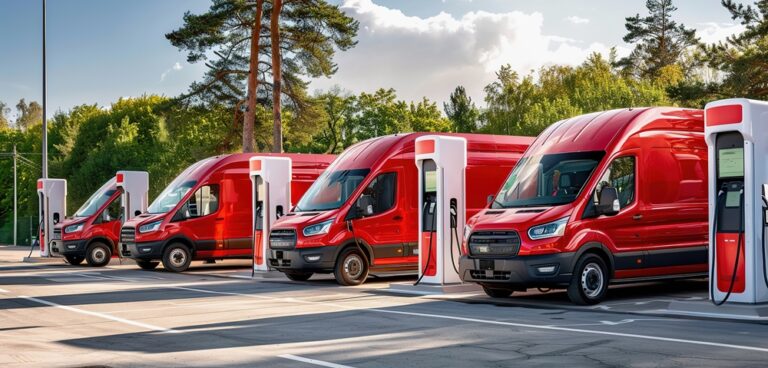The latest data from the Department for Transport shows a 111% surge in the number of company-owned electric vans over the past two years[1].
However, despite this significant growth, Vansdirect warns that there is still a long way for British businesses to go when it comes to embracing electric, as EVs only accounted for 7% of all newly registered fleet vans during that same period.[2]
A spokesperson at Vansdirect states that, “While in the past it may have seemed that EVs were an unrealistic option for fleets, in 2024, businesses should seriously consider making the switch. With the UK government’s 2030 ban on new petrol and diesel vehicles and growing pressure from Low Emission Zones (LEZs) and Clean Air Zones (CAZs), sticking with traditional fuel options may not be viable as a long-term strategy.
“But it’s not just about meeting new regulations. Transitioning from internal combustion engine (ICE) vehicles to electric vans brings significant advantages, such as lower running costs and a smoother driver experience.”
From cost-savings to access to grants and incentives, the experts at Vansdirect have shared four benefits that make going electric a smart move for businesses.
1. Reduced maintenance costs
Electric vans are around 30% cheaper to maintain than their petrol or diesel counterparts. With fewer moving parts, there’s fewer things that can go wrong, meaning drivers will be spending less time off the road, maximising their earning potential.
What’s more, this reduced risk of broken parts means often less money will be spent on repairing your fleet.
And these costs are expected to reduce even more over time. According to the latest data from the Institute of the Motor Industry (IMI), 24% of the UK automotive workforce is now qualified to work on EVs[3], and this number is only set to rise. As a result, the growing competition among EV mechanics is set to lead to lower prices on repairs for EV’s.
2. Receive grants and incentives
The government’s Plug-in Van Grant (PiVG) offers a substantial discount for zero-emission vans. Therefore, you could receive up to £2,500 for a small van and £5,000 for a large van, significantly lowering the upfront cost of going electric.
To qualify for the PiVG, small vans must:
- Weigh under 2,500kg
- Emit less than 50g/km of CO2
- Travel at least 60 miles on a single charge
For large vans, the criteria are:
- A gross vehicle weight of 2,500kg–4,250kg
- CO2 emissions under 50g/km
- A minimum 60-mile electric range
3. Save money in Clean Air Zones
There are currently 14 Low Emission and Clean Air Zones across the UK, which are designated areas where vehicles that do not meet specific emissions standards are charged to enter.
Over the course of a year, a van passing through these zones every working day could incur costs of up to £2,500, significantly impacting your bottom line. With many more clean air zones on the horizon, going electric now can help you avoid these extra costs.
4. Lower your running costs
Currently, UK petrol prices are averaging 141.6 pence per litre, which means filling up your van’s tank can add up significantly. Whether you’re a self-employed driver or managing a larger fleet, switching to an EV could bring substantial savings in the long run.
Pod Point estimates that fully charging your van would only cost you around £17. As renewable energy sources become more widespread, these costs are likely to decrease further, making electric vans even more economical to run.
So, there you have it, everything you need to know about why you should make the switch to an electric van. Considering making the switch? You can visit the Vansdirect website to shop for electric vans.
[1] https://assets.publishing.service.gov.uk/media/669fdb19ce1fd0da7b592bc0/veh0142.ods
[2] https://assets.publishing.service.gov.uk/media/669fdb1afc8e12ac3edb0327/veh1153.ods
[3] https://tide.theimi.org.uk/industry-latest/news/3000-ev-technician-shortfall-predicted-2031


